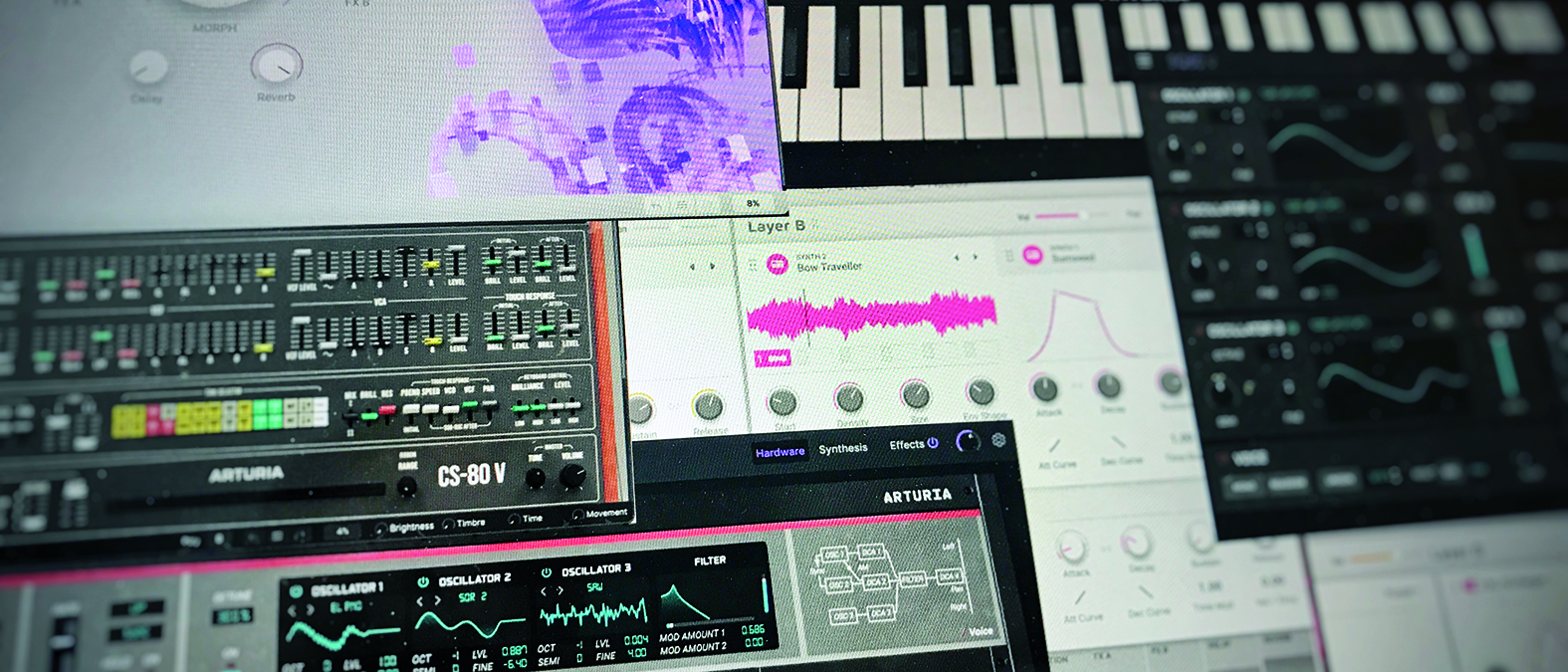MusicRadar Verdict
It’s arguably a tougher sell than some earlier instalments, but V Collection 9 becomes more appealing the closer you look.
Pros
- +
Augmented plugins are fun and offer surprisingly deep synthesis tools.
- +
MS-20 and SQ80 sound on the money.
- +
Refreshed plugins and sound packs are welcome additions.
Cons
- -
Does your setup really need another MS-20?
- -
Augmented plugins aren’t the best for deep realism.
MusicRadar's got your back
Arturia V Collection 9: What is it?
Arturia’s steadily-expanding bundle is the most recognisable and – arguably – best value game in town when it comes to classic synths as plugins. New iterations come around on a steady annual basis, and we can expect each to add a handful of new emulations along with a refresh of some of the older plugins in the collection.
With this latest iteration, Arturia takes a slight, unexpected left turn in the form of two new plugins – Augmented Strings and Augmented Voices – that stand out against its V Collection compatriots by eschewing the retro-emulation theme in favour of a far more modern, broad approach.
Arturia V Collection 9: Performance and verdict
KEY FEATURES: Includes 33 software instruments including four new editions and four updates, plus 14 sound packs. Upgrade prices available, login to an Arturia account to see offers. CONTACT: Arturia Buy from Plugin Boutique
Let’s tackle the more conventional additions first though. V Collection 9 introduces two new emulated instruments to the package. The first is a synth that we’re surprised it’s taken Arturia this long to attempt: the Korg MS-20, hardly obscure. Korg’s own hardware reissue, the MS-20 mini, was one of the first significant synths of the affordable analogue revival. Since then Korg has released multiple hardware iterations, including desktop and full-sized reissues, all of which come on top of Korg’s own software MS-20, which has been on the market since the early ’00s. And that’s before we even get to unofficial versions…
The OG MS-20 was known for its ability to sound gritty, thanks to weighty, drivable oscillators and raspy resonant filters. Arturia leans hard into this side of the MS-20’s character in branding, offering up plenty of hard-edged presets to match. Comparatively, Arturia’s MS-20 feels like it pushes into full-bodied overdriven territory a little more easily than Korg’s software version or the modern hardware recreations. It also adds a few extra features, like a simple oscillator sync switch and extra front panel modulation routings. This aside, there’s little to differentiate the core elements of Arturia’s synth from other recreations.
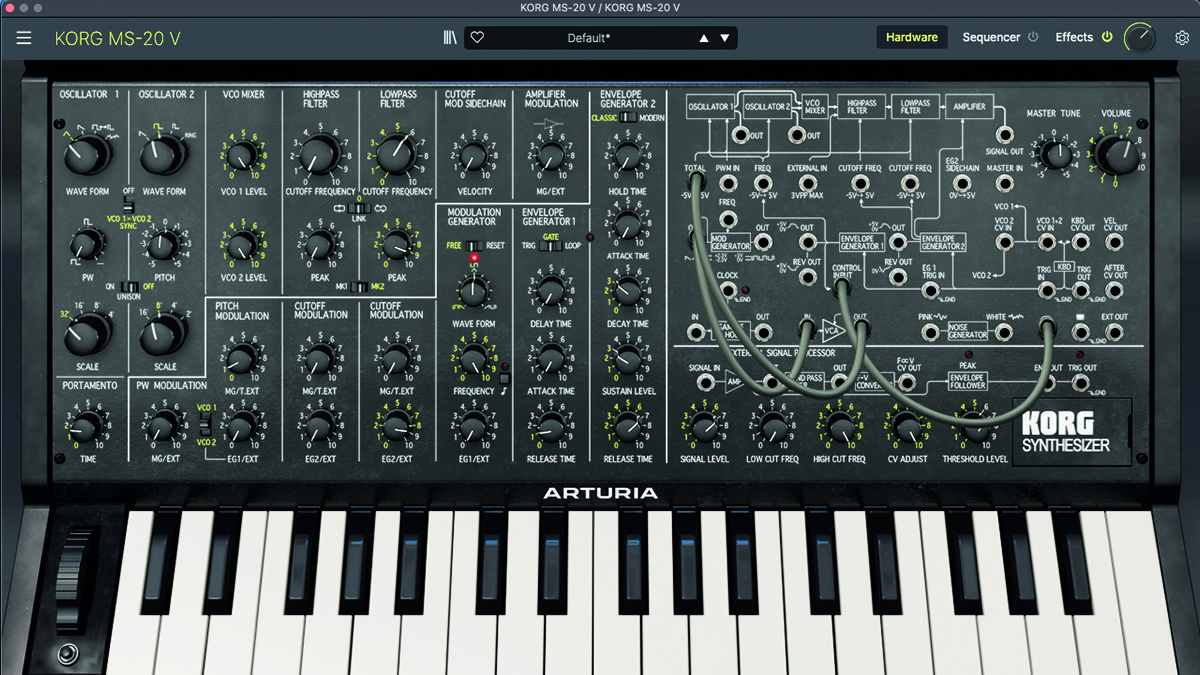
As with other V Collection synths, where Arturia’s version sets itself apart is in the modern bells-and-whistles added to the package. These include a sequencer, which models Korg’s own SQ-10, and a range of effects. The original SQ-10 was a three-track, 12-step CV sequencer designed to be paired with the MS-20 and its MS-10/MS-50 siblings. The hardware itself could be fiddly for precise pitches, but this added to its character. Part of the appeal of the CV sequencer/semi-modular synth combo was the ability to patch the SQ-10’s three channels to a whole range of parameters beyond standard pitch and trigger inputs. Coupled with its simple portamento setup, this led the SQ-10 to become a fantastic source of bendy, acid-style bass riffs. Arturia does a good job of recreating this workflow and patchability, and the resulting combo of virtual synth and sequencer is a lot of fun in use.
On the effect front, MS-20 V adds four effect slots, each of which can be filled with one of 16 processor types – borrowed from Arturia’s Pigments softsynth – that can be placed in series or parallel.
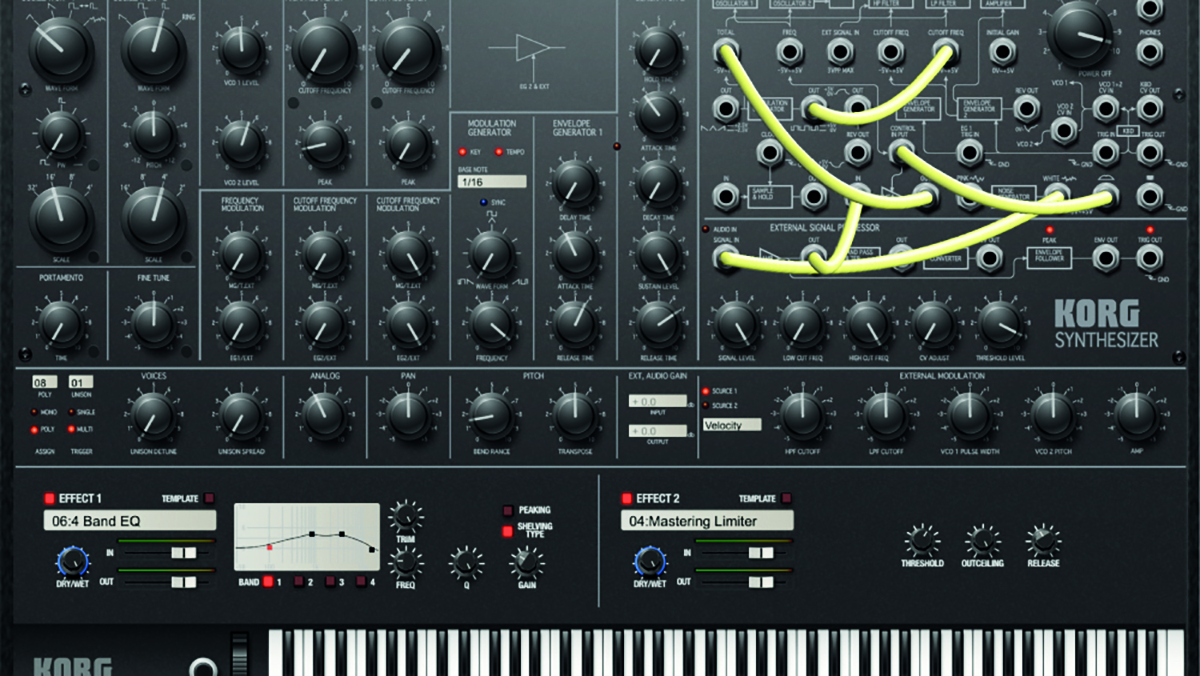
• Korg Collection 3
Korg’s own emulation bundle also offers an officially branded – and pretty impressive – MS-20.
• NI Komplete 13
NI’s bundle is broader than the V Collection, with effects and more sampled instruments.
Although the MS-20 V is largely pitched at aggressive synth sounds, the MS-20’s semi-modular design has always been far more versatile than it initially appears. As a synth it has wonderful classic synth FX, drones and percussive tones as well as the more obvious basses and leads. Many already have access to an MS-20, but it’s a worthy addition.
The other emulation added for V Collection 9 is the SQ-80 V, a software recreation of Ensoniq’s hybrid synthesiser first released in the mid-1980s. A lesser-known highlight from the early days of digital synths, the original SQ-80 paired 8-bit digital oscillators with a Curtis-style analogue filter and analogue amp section.
Arturia’s SQ-80 V has been available for a while, but it’s a welcome addition. Like its real-world inspiration, its sound can reach from retro early digital tones to a solid range of synthesised pianos, complex pads and edgy, pulsing synth leads.
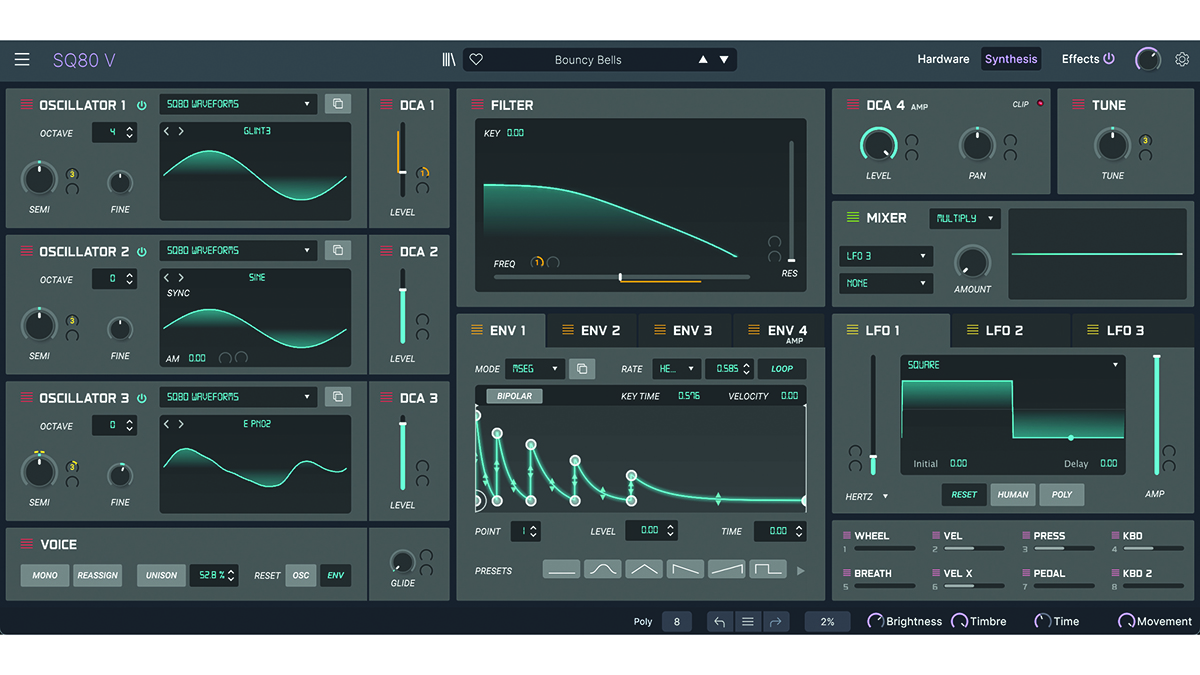
Compared to other synths of the era, the SQ-80 was accessible when it came to programming, but the expanded view of Arturia’s plugin version is still a welcome addition. Here, users get a far more detailed level of up-front control over the three oscillators and the filter. The improvements are most evident when adjusting and routing modulation though, and it’s the ability to apply the varied polyphonic modulators to the digital oscillators that result in its most inspiring sounds.
Again, the synth is expanded with a modern, well-equipped arpeggiator and a four-slot effect section similar to that of the MS-20. Both the SQ-80 V and MS-20 V also benefit from other appealing touches shared by their V Collection counterparts, including configurable macro controls and interactive tutorials that do an excellent job of introducing the workflow of each instrument.
Augmented collection
While both the MS-20 and SQ-80 feel like standards for the V Collection, the two new Augmented String and Augmented Voice instruments are rather more unexpected. As their names suggest, these focus on string and voice sounds, but it would be a misnomer to think of these as straightforward sample instruments. The ‘augmented’ nature of the plugins refers to the blend of samples and synthesis at play, creating instruments that aim not so much for the realism of, say, a meticulously sampled Kontakt library but a more modern hybrid sound suited to electronic music or modern cinematic compositions.
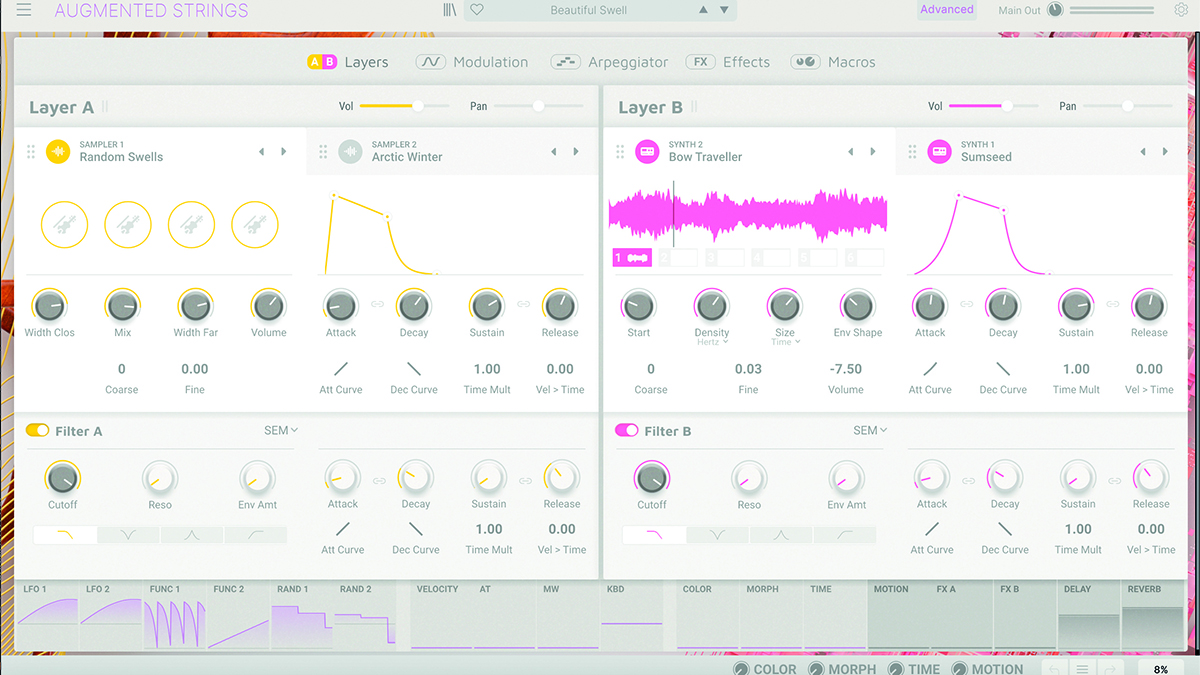
<script src="https://cdn.jwplayer.com/players/3eRiWr8f-dYV0KZBx.js"></script>
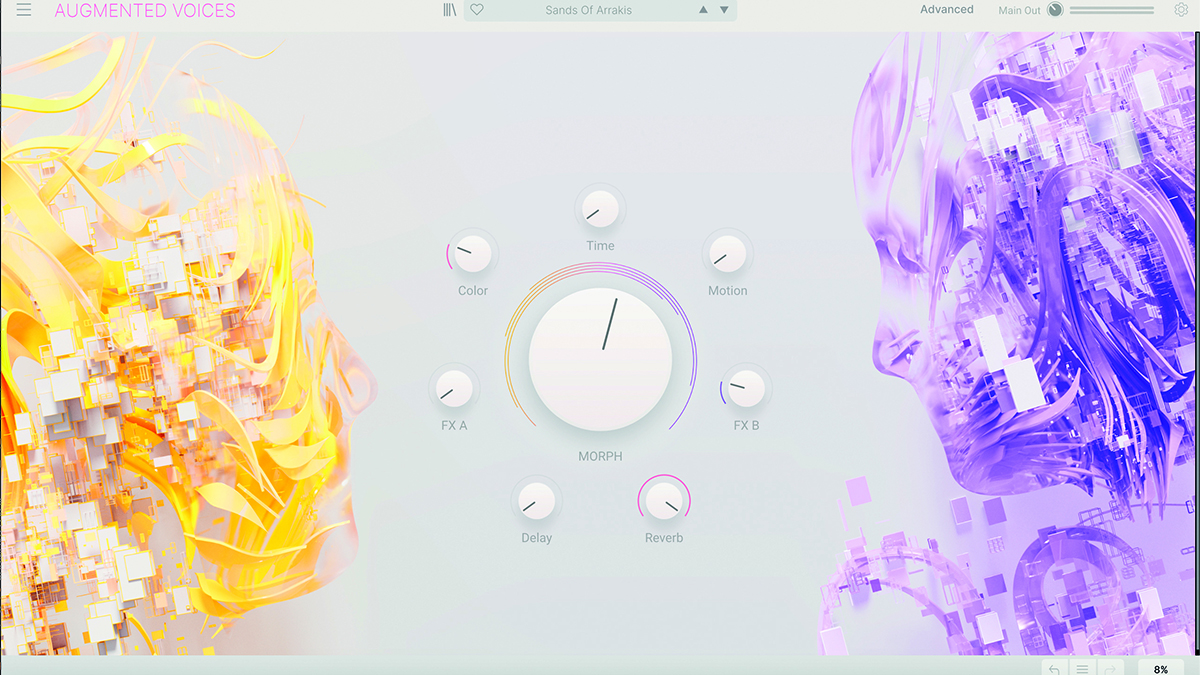
Entering the advanced view offers a considerably deeper level of control and reveals what’s actually going on under the hood of each plugin. In terms of their workflow, the Augmented instruments are functionally very similar to Arturia’s multimode softsynth Pigments. As with Pigments, these instruments each use a multilayered sound engine that combines sample, virtual analogue, wavetable, granular and additive sound sources.
The overall level of depth is shallower than Pigments – fewer audio-rate modulation options and no additional Utility engine, for example – but there’s still a lot of power here. Each sound layer offers two oscillator types, allowing a wealth of sound combinations, and each layer can have its own individual filter, selectable from a range of options including standard multimode filters, a SEM model, plus comb, phaser and formant variations.
Again, the modulation and effect pages here are like those found in Pigments, offering a pleasing amount of depth with tools like function generators, randomisation processors and dual-layered effects. The main difference between that synth and these Augmented plugins is that here each synth engine is assigned its own ADSR amp envelope, rather than featuring a global amp section like Pigments does.
The core of each plugin’s personality comes down to the multisamples contained in the sampler engines. Each offers a variety of sounds ranging from simple tones to realistic multisamples and more esoteric and creative material. The level of control varies: basic sounds have just volume and pitch parameters, while others let users adjust mics or, for more creative sounds, an element of randomisation.
These Augmented plugins certainly aren’t conventional sample instruments
These Augmented plugins certainly aren’t conventional sample instruments. It’s possible to get ‘realistic’ sounds out of either, although they don’t specialise in that realm; there’s no control over string articulations, for example, or anywhere near the volume of sample material you’d get with something like a string library from Spitfire or Eastwest. The combination of interesting source samples and surprisingly deep synthesis makes for potently powerful tools though. For electronic-leaning musicians looking for quick, inspiring string and voice textures, they’re a valuable addition.
Updated and refreshed
As usual, this latest update updates several existing plugins alongside the new releases. Now it’s the turn of CS-80 V, Piano V, Prophet-5 V and Prophet-VS V. While all have been fully rebuilt, precisely what and how much has changed varies from plugin to plugin. In the case of the CS-80, for example, the plugin gains a vastly expanded Advanced view, far nicer for toying with modulation routings. There’s also an entirely refreshed list of presets, more effect options and a sharper UI.
The Prophets, meanwhile, have been split into two standalone instruments; in previous versions, both the Prophet-5 and VS emulations were handled by a single Prophet V instrument. Once again, each gains a fresh set of presets, additional effect options and more depth of control via the Advanced view, bringing them more in line with the newer cuts in the collection.
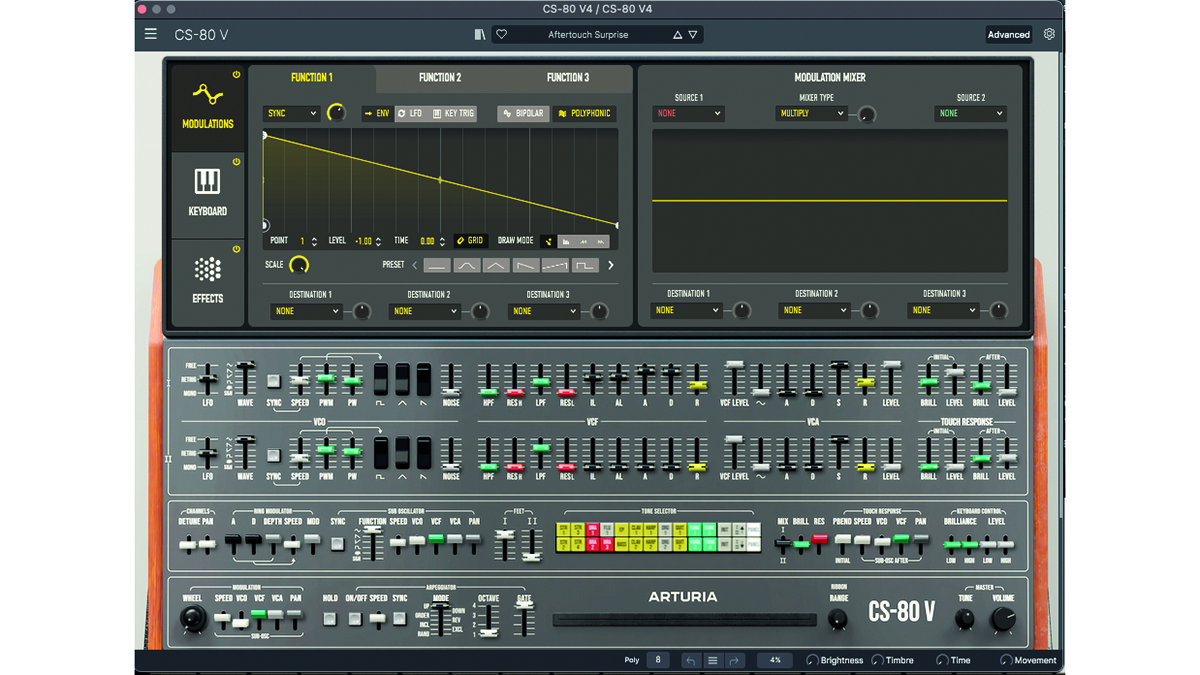
Verdict
We suspect V Collection 9 may be a tougher sell for Arturia than previous iterations. On the emulation front, the MS-20 is already a fairly common synth for modern producers, and the SQ-80 has already been out a while. The Augmented plugins, meanwhile, are slightly less of a straightforward sell, and it’s not until you get hands-on with them that their appeal really comes to light. It’s worth checking out the whole collection though because there’s a lot to like here.
MusicRadar verdict: It’s arguably a tougher sell than some earlier instalments, but V Collection 9 becomes more appealing the closer you look.
Arturia V Collection 9: Hands-on demos
MusicRadar
Arturia
Venus Theory
Gear4music Synths & Tech
Creative Sauce
Arturia V Collection 9: Specifications
- KEY FEATURES: Includes 33 software instruments including four new editions and four updates, plus 14 sound packs. Upgrade prices available, login to an Arturia account to see offers.
- CONTACT: Arturia
I'm the Managing Editor of Music Technology at MusicRadar and former Editor-in-Chief of Future Music, Computer Music and Electronic Musician. I've been messing around with music tech in various forms for over two decades. I've also spent the last 10 years forgetting how to play guitar. Find me in the chillout room at raves complaining that it's past my bedtime.
“Every note counts and fits perfectly”: Kirk Hammett names his best Metallica solo – and no, it’s not One or Master Of Puppets
Ranked: Bon Iver's albums, from Sable, Fable to For Emma, Forever Ago
“Its mission is simple: unleash the power of any amplifier or line-level source without compromise”: Two Notes promises a “watershed” in tube amp control with the Torpedo Reload II
